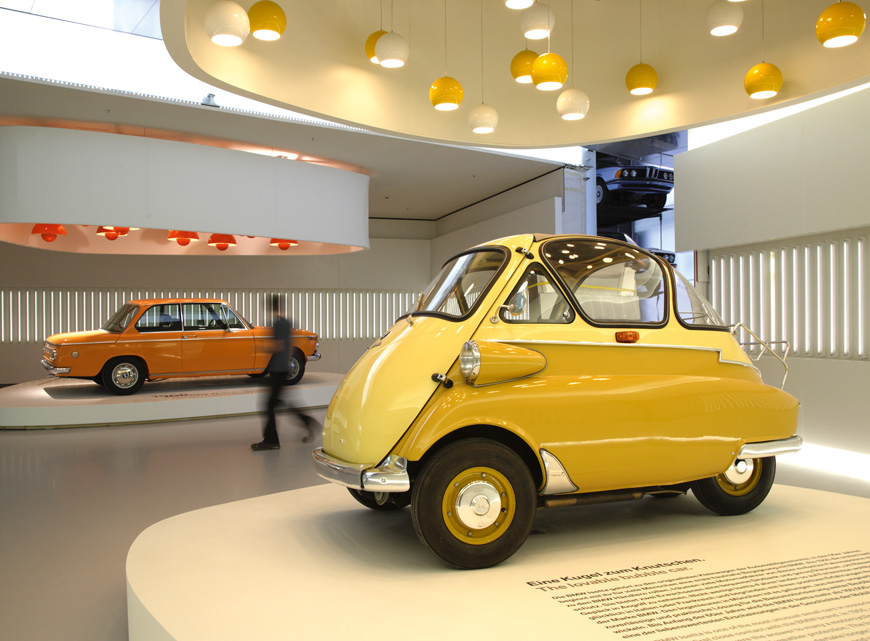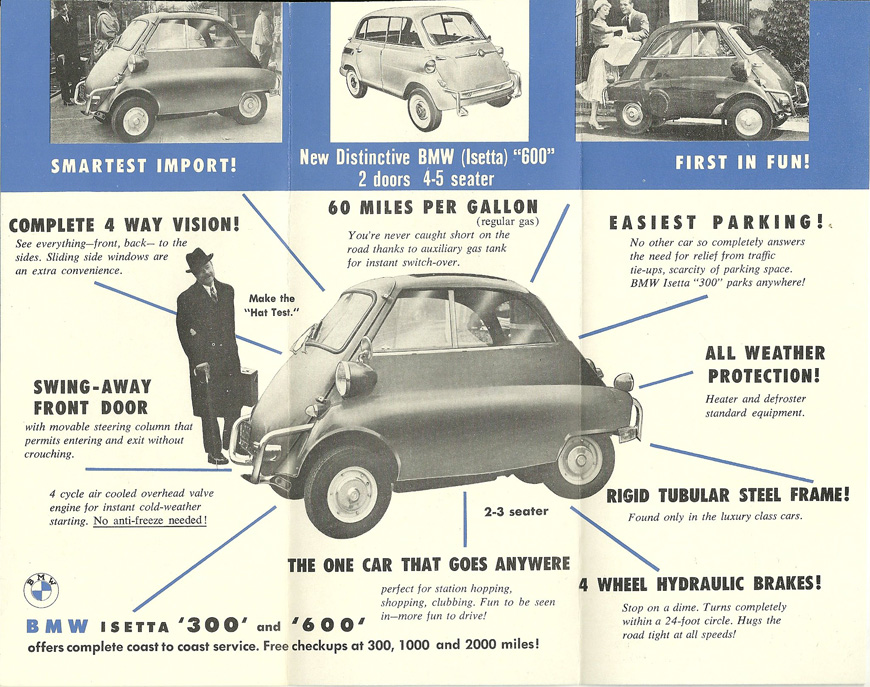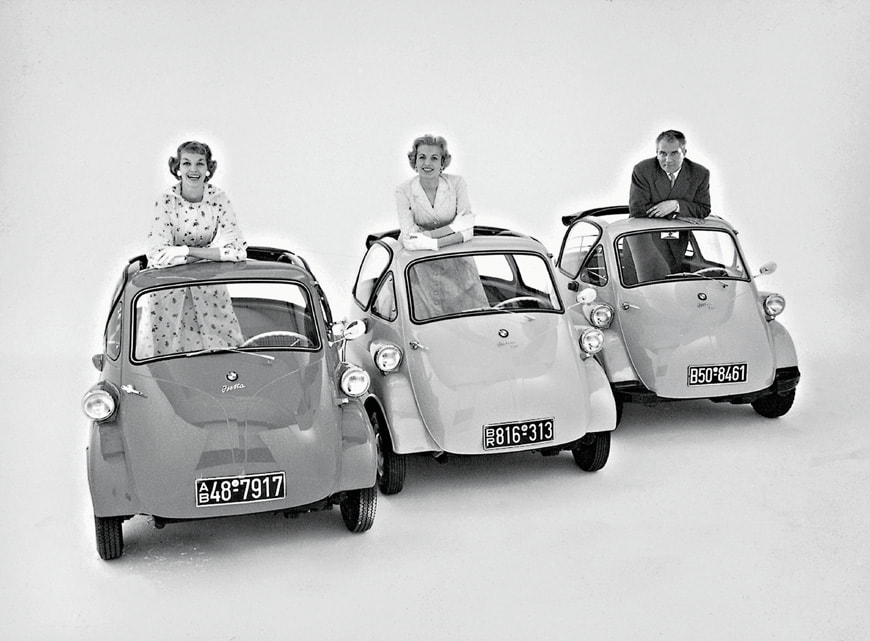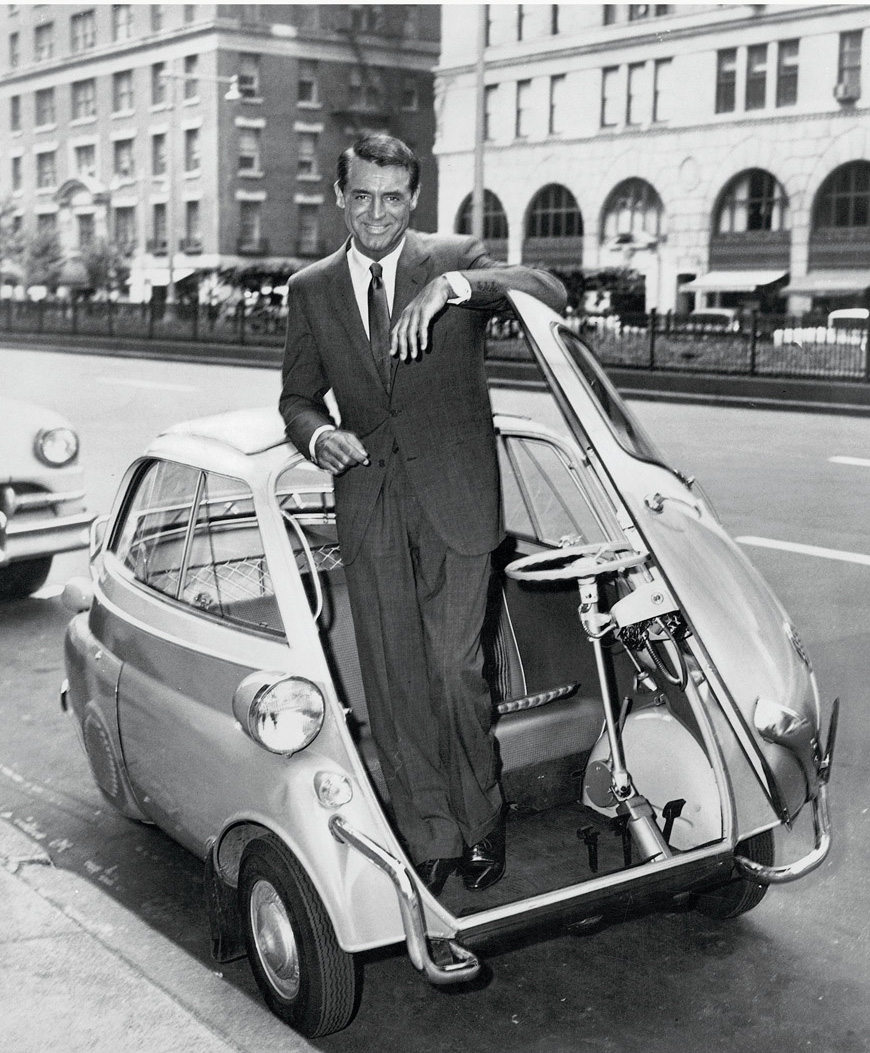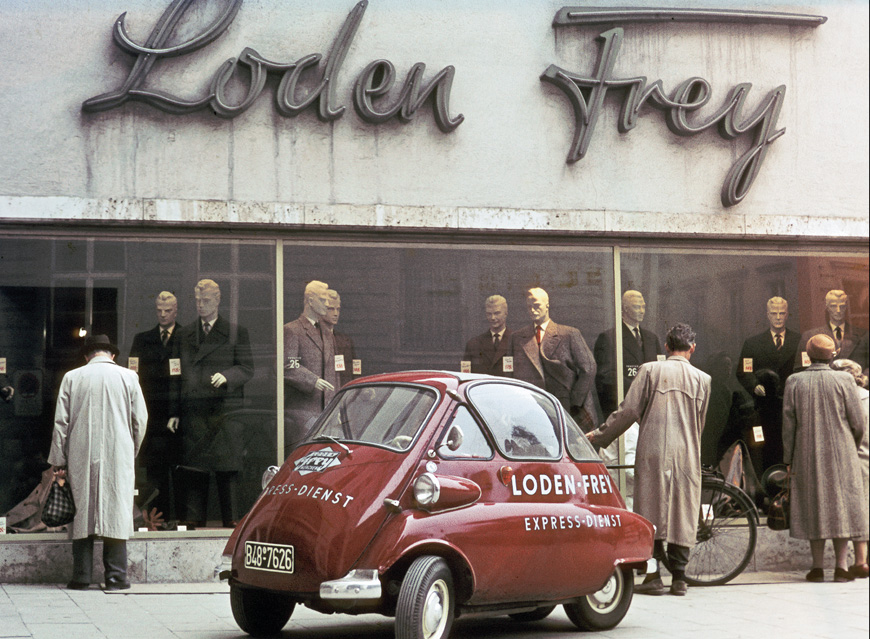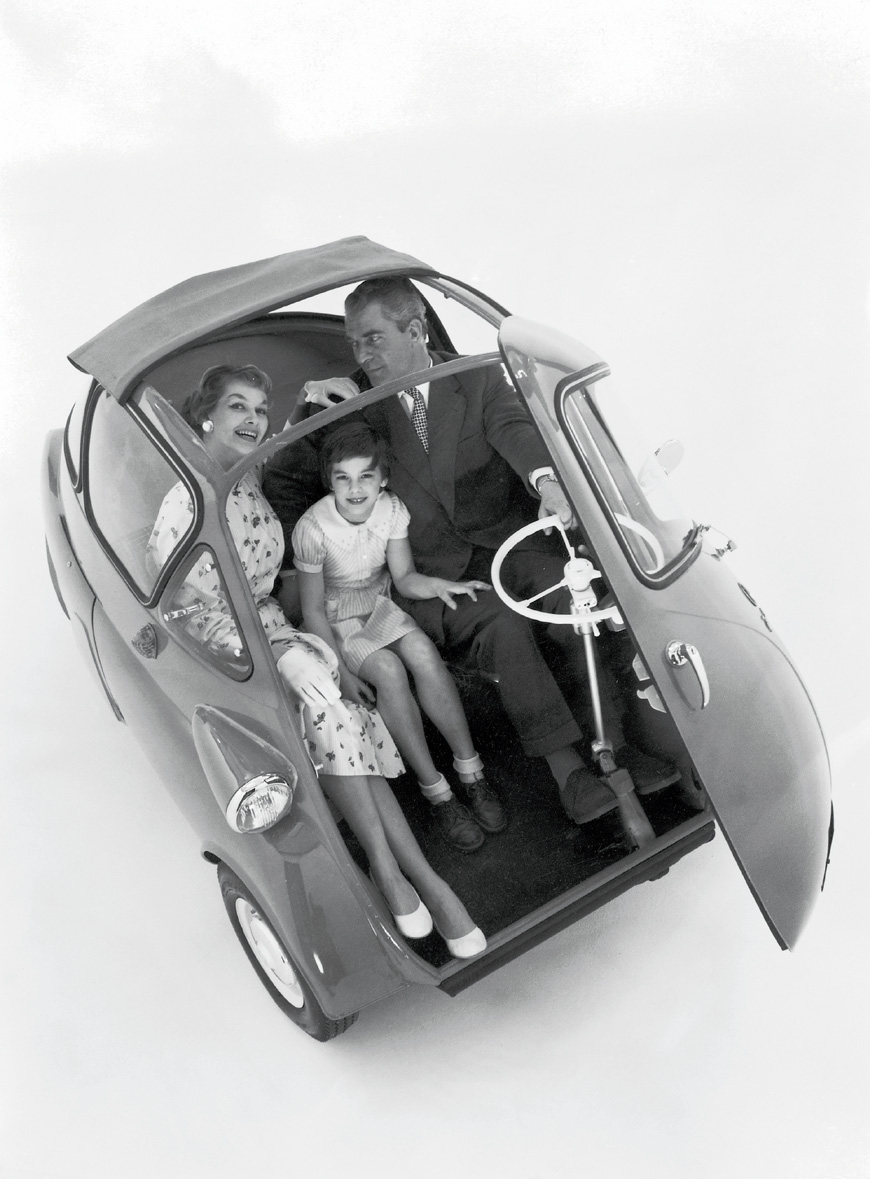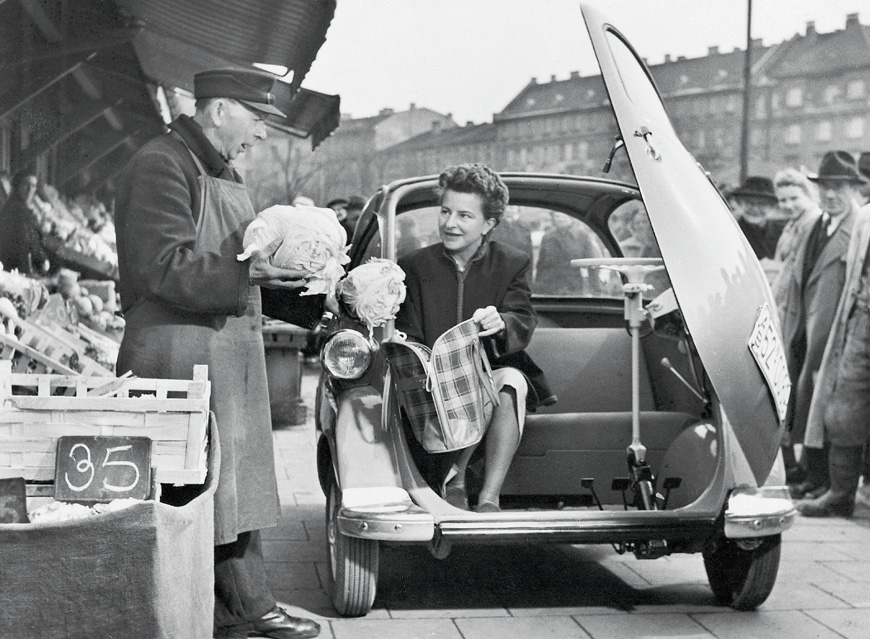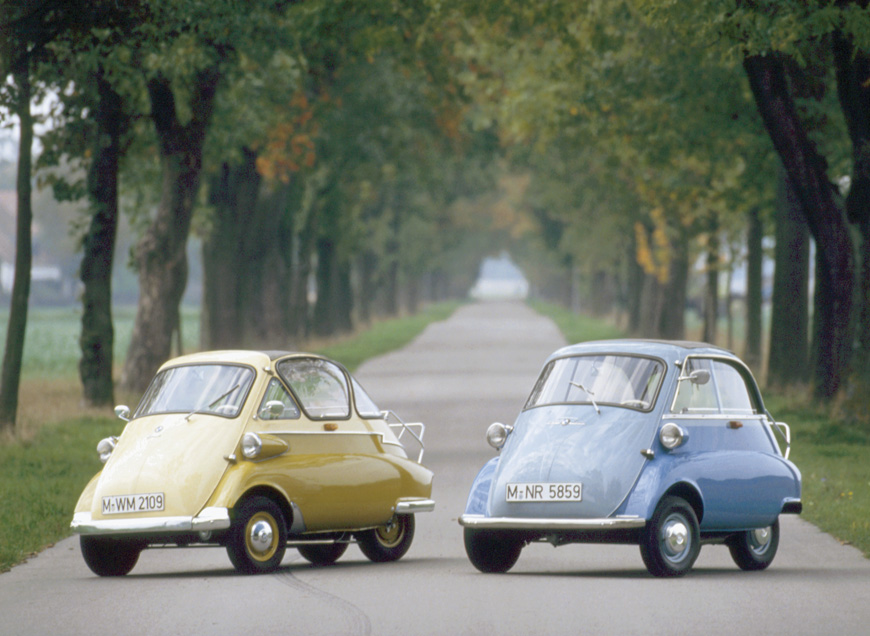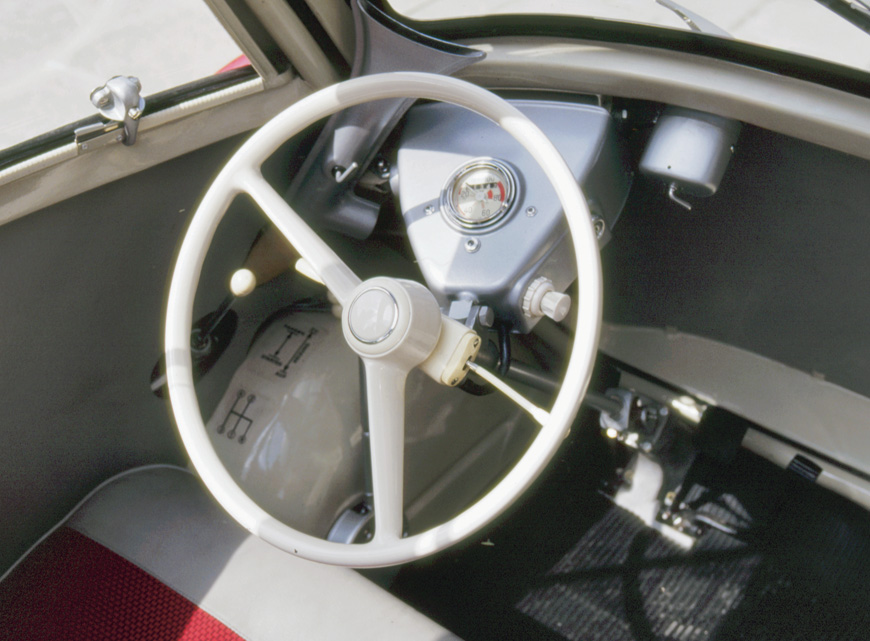The history of the ISO/BMW Isetta, the world’s first microcar
brochure: John Lloyd / Flickr
The history of the ISO/BMW Isetta, the world’s first microcar
Introduction
The early Fifties were a truly unique period in the history of automotive design.
Europe was eager to leave the tragedy of the Second World War behind and to celebrate, also through new individual forms of mobility, its newfound peace.
The times were ripe; the rebuilding of cities and productive infrastructures was slowly improving people’s economic conditions, thus paving the way for the mushrooming of the private mobility that would mark the following decades.
cover-image: the BMW Isetta-250 in the BMW Museum. Courtesy © BMW AG
At the same time, the conflict had left as “side-effects” a lot of projects and technologies developed for military purposes but now applicable to the civilian sector, especially in transport.
Fiat 500 e 600, Piaggio Vespa, Innocenti Lambretta, Citroën 2CV, Citroën DS, Porsche 356, Morris Mini Minor, and Volkswagen T1 Transporter; within 10 years, from 1948 to 1958, Italian, French, British, and German manufacturers introduced a multitude of vehicles which would change the way we think about and use the means of personal transportation forever.
Many of those models were based on military technology of the previous decade, as well as on the availability of underused production facilities that had been “inflated” by wartime needs.
The ISO Rivolta Isetta
Among the industrialists who saw opportunities in that situation, there was also an Italian engineer, Renzo Rivolta, – whose company, Iso Rivolta Spa, was manufacturing scooters and motorcycles – who thought it was time to produce a new type of automobile as small as possible.
In 1951, Rivolta commissioned two young aeronautical engineers, Ermenegildo Preti, and Pierluigi Raggi, to design an innovative tiny automobile powered by one of the motorcycle engines his company was already producing.
The result was an extraordinary automobile, we would call it a “city car” today, which was presented at the Turin Motor Show in 1953.
Lilliputian (it was only 2.29 meters / 7.51 feet long) and powered by a 236 cc two-cylinder two-stroke engine with 7.1 kW, the automobile, named Isetta (meaning “little Iso” in Italian), could accommodate up to two people on a sort of small sofa and had a top speed of 75 km/h / 47 mph.
The egg-shaped body of the vehicle was designed to maximize internal space and glass area; since the small engine was at the rear, Preti decided to equip the automobile with a single large door, swinging outwards, though which driver and passenger got into the automobile from the front. To facilitate access, the steering column was hinged and swung out together with the door, to which it was connected by a steel bar. At the rear of the vehicle, along with the engine, there was a small trunk compartment.
Thanks to its monocoque design and small size, the Isetta weighed less than 500 kg; like the Fiat Topolino and the Fiat 500, it had an openable fabric sunroof; a feature very appreciated by Italian customers at the time.
The different wheel track, with the rear wheels very close to one another, was a remnant of an early prototype that had only three wheels. An opening on the right side ventilated the air-cooled engine. Together with its aerodynamic design and technical solutions, the aeronautical heritage of the vehicle is also evident in the glass “canopy” consisting of six bubble-like windows, some of which of double curvature which was quite something for a cheap little car in the Fifties.
Despite its revolutionary design and good performances (road-holding was notoriously excellent and fuel efficiency was very good also by today’s standards), the Isetta wasn’t a success in Italy. The price was too close to that of “real” automobiles with 4 seats such as the old Fiat Topolino and the forthcoming Fiat 500, furthermore, Italian cities hadn’t at the time the parking shortage problems they have today.
Brochure with various types of BMW Isetta. Courtesy John Lloyd / Flickr
The BMW Isetta(s)
Thus, the history of Isetta seemed to be over. Yet, things went differently.
In 1954, the Italian little car attracted the attention of BMW managers, indeed.
The German company was in dire straits at the time and struggling to introduce new models without having much money to spend. The Germans were especially eager to produce a small automobile – low-cost and fuel-efficient – and Rivolta’s vehicle seemed so perfect for the scope that they asked the Italians to license them the design.
That was the origin of the BMW Isetta 250; introduced in 1955, it had almost everything in common with the Italian Isetta, except the engine (BMW used its own 250-cubic-centimeter 4-stroke 9-kW motorcycle engine) and few modifications to the body (for example, the headlamps were moved slightly up); the first model produced in Germany also included a heating system, not present in the original model.
An advertising picture of the BMW Isetta 250 “Standard”; courtesy © BMW AG
Cary Grant with BMW Isetta, courtesy © BMW AG
BMW produced the Isetta in various versions, from standard to deluxe, with two engines (a 250 cc initially and, since 1956, a 300 cc), and in 45 different colors.
By today’s standards, the vehicle was quite unsafe; in case of a frontal crash, the only escape route was through the sunroof. Yet, this wasn’t considered a big issue at first since, in the early 1950s, many automobiles were as unsafe as the Isetta which, it is worth mentioning, was registered in Germany as a motorcycle. Yet, BMW tried to address the problem by adding additional, more prominent, bumpers in the late models.
Surprisingly, the BMW Isetta was an immediate success; over 160,000 units were made from 1955 to 1962 – including a longer and more powerful 4-seat version, the BMW 600 – until the competition with the much larger Volkswagen Beetle and BMW 700 put an end to its commercial success.
The Isetta was manufactured under license also by Velam (France), Isetta of Great Britain (UK), Metalmecánica (Argentina), and Romi (Brazil).
Looking at the Isetta today, we realize how it was revolutionary for its time.
Along with being the first microcar, it was indeed a precursor of minivans (the Fiat 600 Multipla will be presented four years later).
Furthermore, the idea to prioritize internal space, comfort, and transparency had a great influence on automotive design and, leaving details aside, Rivolta’s concept (combining two seats, rear-engine, rear-wheel drive, a length of fewer than 2.5 meters, aerodynamic body, high fuel efficiency, a large cabin size with trunk and engine as small as possible, large windows for great visibility, openable sunroof) was largely reprised, 36 years later, in the hugely successful Smart Fortwo, a German car, (perhaps not so) coincidentally.
Picture Gallery
BMW Isetta in Munich, courtesy © BMW AG
Above: two pictures of MBW Isetta standard, courtesy © BMW AG
BMW Isetta standard and Isetta export, courtesy © BMW AG
BMW Isetta export cockpit, courtesy © BMW AG
copyright Inexhibit 2024 - ISSN: 2283-5474

